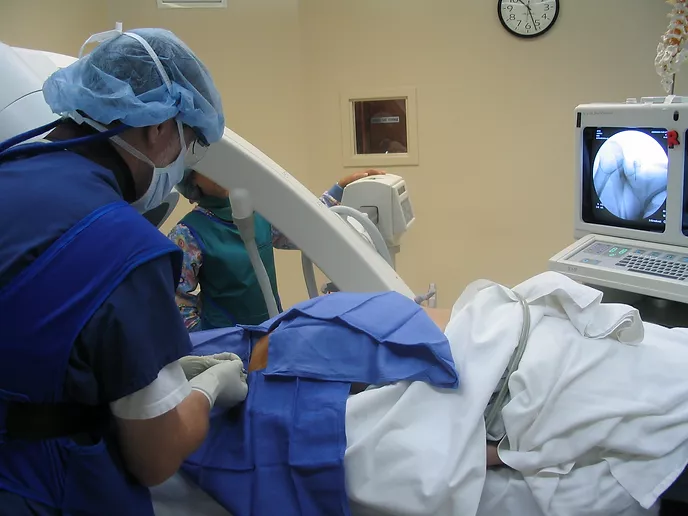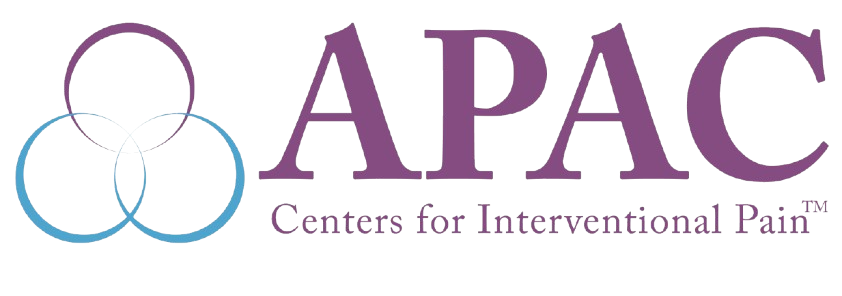Treatments

Services We Provide

APAC provides a wide array of services designed to treat your pain condition with a multidisciplinary approach. Our pain team consists of experts in the fields of interventional anesthesiology, physical medicine and rehab physicians, nurse practitioners, registered nurses, and medical assistants. In addition to our team at APAC, we have hand-picked expert specialists such as physical therapists, pain psychologists, and spinal surgeons who compliment our multi-faceted approach. Utilizing our experienced team approach, we treat a wide variety of acute and chronic pain conditions and tailor our treatment plans to fit your individual needs.
We utilize interventional approaches (injections) to treat painful conditions such as herniated discs, spinal stenosis, nerve injuries from trauma or surgery, occipital headaches , shoulder pain, arthritic joint pain, and sympathetic nerve pain. We also provide surgical interventions such as spinal cord stimulators, discographies, and Radiofrequency Ablations.


Complimentary to the interventional approach, APAC’s comprehensive management program includes a full spectrum of treatments that are non-interventional. Our multi-specialty approach includes the use of medications, physical therapy, and various modalities with the goal of improving your function and quality of life as well as reducing your pain. Our team is experienced at managing your musculoskeletal injuries including acute or chronic neck and back pain, fibromyalgia, peripheral neuropathy, spinal stenosis, sacroiliac joint dysfunction, RSD, sprains and strains, arthritis, sports injuries and headaches.
Procedures We Perform
How it's performed
When should this be used?
Results
Epidural injections successfully relieve many pain symptoms. They may be used to delay or even eliminate the need for surgery or other procedures, particularly in patients with severe pain caused by a herniated disc, degenerative disc disease or spinal stenosis.
Facet joints are located along the entire length of the spine from the neck to the lower back, where one vertebra slightly overlaps another. These joints guide the spine’s movement. A facet block is performed to determine whether a facet joint is a source of pain, and/or to treat pain.
How it's performed
What patients are candidates?
Results
Transforaminal Epidural Steroid Injection
How it's performed
What patients are candidates?
Results
Sacroiliac And Other Joint Injections
How it's performed
What patients are candidates?
Results
How it's performed
What patients are candidates?
Results
Stellate Ganglion Block
How it's performed
What patients are candidates?
Results
Sympathetic Nerve Blocks
How it's performed
What patients are candidates?
Results
Lysis of Adhesions
How it's performed
What patients are candidates?
Results
MILD® Procedure
MILD (Minimally Invasive Lumbar Decompression) is a medical procedure that is used to treat lumbar spinal stenosis, a common condition that occurs when the spinal canal narrows and compresses the nerves in the lower back.
How it's performed
The MILD procedure involves removing small portions of bone and excess ligament tissue to create more space in the spinal canal and relieve pressure on the nerves. The procedure is an advanced outpatient procedure and typically takes less than an hour to complete.
What patients are candidates?
Candidates for the MILD procedure are patients with lumbar spinal stenosis who have not responded to other conservative treatments.
Post procedure
Most patients experience immediate pain relief and are able to return to their normal activities within a few days. The MILD procedure is considered a safe and effective alternative to traditional surgery for lumbar spinal stenosis.
How it's performed
What patients are candidates?
Spinal cord stimulators may be used to manage pain from failed back surgery syndrome or radiculopathy (sciatica or leg pain), chronic neuropathic pain (i.e. complex regional pain syndrome / RSD, nerve injury).


